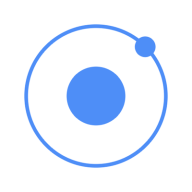

Salesforce Platform and Ionic both offer advanced technological solutions, primarily competing in the realm of app development and CRM solutions. Salesforce seems to have the upper hand with its extensive capabilities and established market presence, though it comes with a higher cost compared to Ionic, which offers a more accessible approach due to its open-source framework.
Features: Salesforce Platform provides a comprehensive suite of features including scalability, quick customization, and reliable deployment processes, along with extensive reporting capabilities. It's ideal for businesses needing strong sales lead management and forecasting solutions. Ionic shines in hybrid app development, allowing a single codebase for both web and mobile applications. It supports frameworks like Angular and React and is known for its ease of use and flexibility, enabling quick and effective cross-platform app development.
Room for Improvement: Salesforce faces challenges with complex integrations, expensive data storage, and customization difficulties, often seen as cumbersome and costly. Ionic, on the other hand, needs enhancements in UI components, community support, and documentation for migrations, and struggles with maintaining a native look and performance outside its core focus areas.
Ease of Deployment and Customer Service: Salesforce Platform is primarily deployed on the public cloud with options for private and hybrid environments, offering broad accessibility and scalability. Its customer service is solid, though some users report delayed response times. Ionic supports various deployment models including public, private, and hybrid clouds, but lacks the extensive support infrastructure of Salesforce. Despite this, Ionic's customer service and community support are praised for their effectiveness.
Pricing and ROI: Salesforce Platform is expensive, especially for small to medium-sized businesses, with complex and costly licensing. Yet, it promises a robust ROI through enhanced efficiency and revenue growth. Ionic presents a cost-effective option with its open-source nature, minimizing licensing costs. While additional enterprise-level features might require fees, Ionic's core framework remains budget-friendly, offering favorable ROI for businesses looking to minimize expenditure.
| Product | Market Share (%) |
|---|---|
| Salesforce Platform | 7.5% |
| Ionic | 6.6% |
| Other | 85.9% |


| Company Size | Count |
|---|---|
| Small Business | 7 |
| Midsize Enterprise | 2 |
| Large Enterprise | 6 |
| Company Size | Count |
|---|---|
| Small Business | 38 |
| Midsize Enterprise | 26 |
| Large Enterprise | 38 |
Ionic is an open-source UI toolkit for developing high-quality mobile and desktop apps with web technologies such as HTML, CSS, and JavaScript. Ionic focuses on the frontend UX and UI interaction of an app – UI controls, interactions, gestures, and animations. It is simple to learn and can be used without any frontend framework by utilizing a simple script inclusion.
While previous versions of Ionic were strongly connected to Angular, version 4.x of the framework was re-engineered to serve as an independent Web Component library, with integrations for the newest JavaScript frameworks, such as Angular. Ionic works well in most frontend frameworks, including React and Vue, however some frontend frameworks require a shim to enable full Web Component support.
The official Ionic CLI, or Command Line Interface, is a tool that enables developers to easily construct Ionic apps and offers a number of useful commands. The CLI installs and updates Ionic and also includes a built-in development server, build and debugging tools, and much more. If you are an Appflow member, you may manage your account and carry out cloud builds and deployments via the CLI.
Ionic Features
Ionic has many valuable key features. Some of the most useful ones include:
Ionic Benefits
There are many benefits to implementing Ionic. Some of the biggest advantages the solution offers include:
Salesforce Platform is a tool that provides application building with open application programming interfaces (APIs), integration tools, back-end services, starter templates, and developer environments. With a low-code interface, users are able to build applications and benefit from automated processes. The product helps customers to increase work productivity and save on IT costs through efficient, easy-to-understand, methods for creating applications.
Salesforce Platform allows companies to build and operate intelligent applications at scale and share them with employees and customers in real time. The tool secures companies' data while connecting and synchronizing it simultaneously across their Customer 360 accounts. The main components of the product are:
Salesforce Platform Features
Also referred to as a “drag and drop app builder," this solution offers various features for customers to create intelligent applications and build personalized services for clients, partners, and employees within the apps.
Salesforce Platform Benefits
The benefits of using Salesforce Platform include:
Reviews from Real Users
A vice president at a healthcare company values Salesforce Platform because it is flexible and user-friendly with helpful pre-built schemas.
Peter G., a senior technical consultant at a tech services company, rates Salesforce Platform highly because it is intuitive, quite easy to learn, and stores all kinds of relevant sales information.
We monitor all Mobile Development Platforms reviews to prevent fraudulent reviews and keep review quality high. We do not post reviews by company employees or direct competitors. We validate each review for authenticity via cross-reference with LinkedIn, and personal follow-up with the reviewer when necessary.